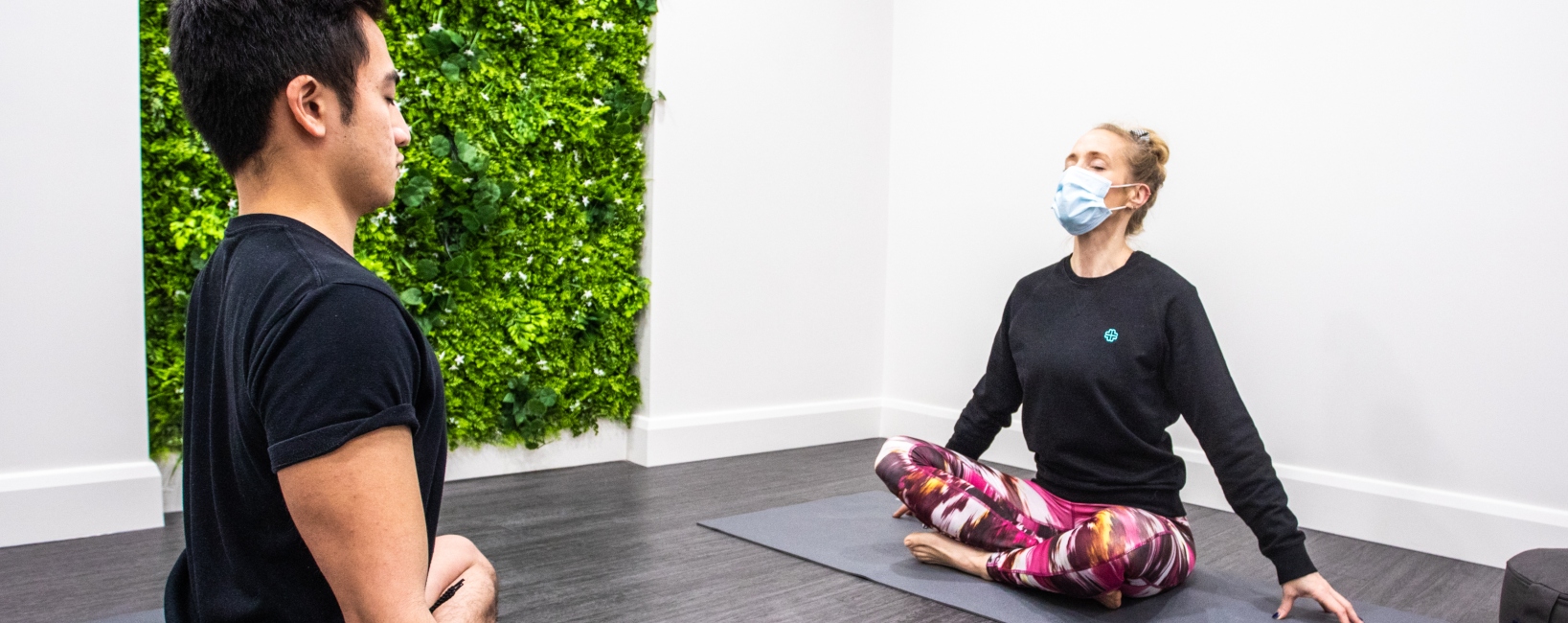
Breathwork for Anxiety
One of the most common conditions we see in the practice is anxiety. It is thought that at any one time 1 in 20 people suffer from anxiety. Undoubtedly, the pandemic, bringing with it uncertainty, has exacerbated the problem.
Many people suffer from anxiety occasionally. Often a moderate amount of anxiety can be helpful if it drives high performance. However, anxiety becomes a problem when it is frequent and impairs our performance, sleep and relationships.
Anxiety not only causes people to feel fearful and tense. It can also cause physical symptoms including:
- Tremor
- Palpitations
- Nausea
- Pins and needles
- Tight chest
- Fatigue
- Diarrhoea
- Bloating
- Stomach cramps
- Muscle aches
- Sweating
- Dry mouth
One powerful technique to get control of anxiety is through the breath. The physical symptoms of anxiety occur because of activation of the sympathetic nervous system. This is the fight or flight part of the nervous system. It is helpful if we need to escape a dangerous situation. Less so if it is activated by a Zoom meeting. We can use our breath to quieten the sympathetic nervous system and activate the parasympathetic nervous system. The parasympathetic nervous system is the rest and digest nervous system.
There have been several studies that have suggested that deep, intentional, diaphragmatic breathing is beneficial in reducing stress and anxiety. A particularly easy to master technique that I find very effective is Box Breathing. This technique was popularised by former US NavySEAL Mark Devine. He used the technique to help him finish as “Honour Man” in his SEAL class. He now mentors SEAL candidates and as part of his mentoring teaches the candidates Box Breathing.
The technique is called Box Breathing due to its equal four components. To try box breathing for yourself:
- Exhale until you have totally emptied your lungs. Once they are fully emptied, hold your breath for 4 seconds.
- At the end of the breath hold, inhale through your nose deep into your belly for 4 seconds.
- Next, hold your breath for 4 seconds.
- Now exhale for four seconds emptying your lungs fully.
Start by doing this cycle for a couple of minutes per day. Gradually increase the time you spend box breathing to 10-20 minutes per day. As your technique improves you can increase the length of the count.
Some tips to help optimise your technique:
- Ideally, find a quiet place to practice
- Try to consciously relax your muscles before you start breathing.
- As you breathe in, consciously and gently fill your abdomen with your breath. But don’t force it.
- Placing a hand on your abdomen can help.
Let us know if you find the technique helpful. If you’re struggling with anxiety then please don’t hesitate to get in touch.
Dr J Hugh Coyne
Private GP